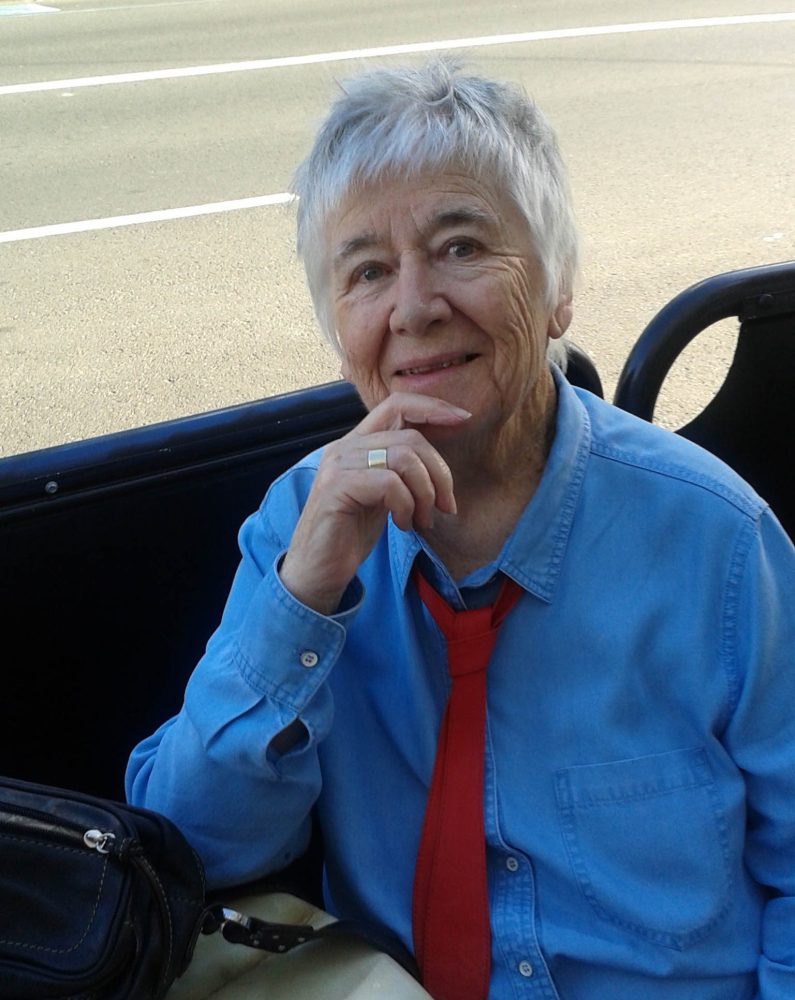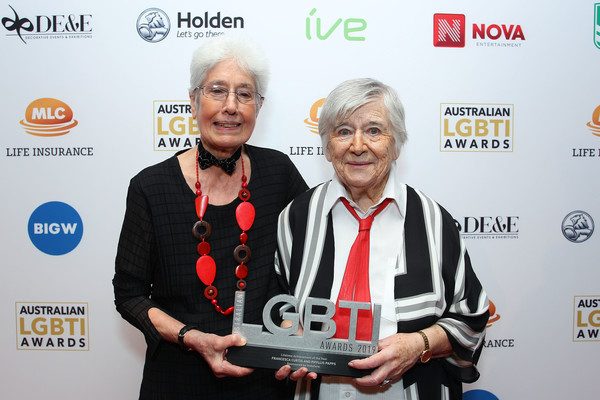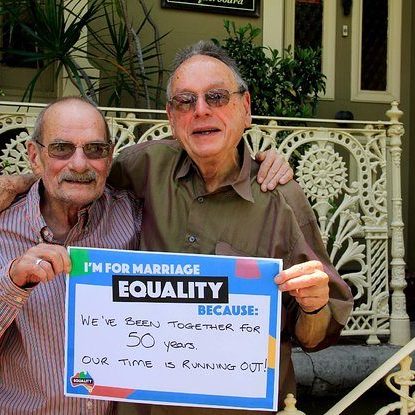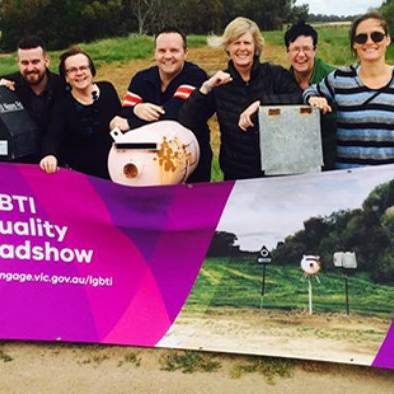
Francesca Curtis: “I have nothing to hide, I have nothing to be ashamed of …”
Francesca Curtis
Born March 6, 1931, died December 24, 2021
Freedom fighter for LGBTI+ equality
In 1969 Francesca Curtis became a founding member of the Daughters of Bilitis, now considered Australia’s first gay rights group. The group aimed “to improve a lot of the female homosexual by attempting to improve her public image, to improve public understanding and by helping the female homosexual to understand herself”.
The hardest bit was overcoming the sense of shame and self-loathing most gays felt, at least until they found their tribe. And that wasn’t easy in the age before social media, gay bars and gay magazines.
Male homosexuality was still illegal. There was no statute against lesbianism but it was a source of great shame. In Melbourne, where Francesca found her tribe in the 1950s and 60s, gays and lesbians were routinely vilified and bashed, including by the cops, and you could be fired for being gay. (You can still be fired today but now only by people of faith!)
Gays and lesbians could be tolerated provided they didn’t go parading their relationships and other deviances but Francesca was having none of it: she was determined to live her life honestly. In June 1970, when the current affairs show The Bailey File wanted to do a show about lesbians, she volunteered to be interviewed.
Gays and lesbians had appeared on television before but the practice was to blackout their faces. Francesca declined to be hidden, thereby becoming the first lesbian to come out on Australian TV.
“Why have you agreed to be interviewed full face on The Bailey File tonight?” the interviewer asked her towards the end of the interview, a note of incredulity in his voice.
Francesca replied: “I have nothing to hide, I have nothing to be ashamed of, so I decided that I would like to come on and do this full face and talk about the aims of our group [the Daughters of Bilitis].”
Watching The Bailey File that night was Phyllis Papps, the daughter of a Greek immigrant family who was engaged to be married, but increasingly confused about her own feelings. It was only when she saw and heard Francesca that she began to understand that there were other women like her. Like scores of others, she sent a letter to the post box number helpfully provided at the end of the show and later attended a meeting of the Daughters of Bilitis, where she met Francesca.
The connection between them was immediate. And so began a loving relationship that lasted 51 years until Francesca’s death in Cowes on Christmas Eve at the age of 90.
At Francesca’s funeral, Gary Jaynes from the Australian Queer Archives spoke of her courage: “Francesca’s decision to do the Bailey File interview strikes me as remarkably brave, especially given the few supports that were available then. The concept of Gay Pride hadn’t really been articulated then – at least not in Australia. But Francesca’s motivation for doing the interview exemplified it.”
Francesca retained a disarming honesty all her life. She made no grand statements, she just lived openly as a lesbian and accepted the consequences of that decision.
In October 1970, the country’s best known current affairs show This Day Tonight also tackled the subject of lesbianism. The program included short clips of “ordinary Australians” joyfully expressing their disgust. There is footage from a meeting of the Australasian Lesbian Movement (the successor to the Daughters of Bilitis) with the lesbians filmed from behind so they could not be identified. And this time Phyllis joined Francesca in the TV studio – full face – to be grilled about their lives as a lesbian couple.
Phyllis later wrote: “The program brought with it a flurry of complaints from shocked viewers. Those who weren’t complaining were the women who contacted ALM after the program. We soon found ourselves a point of contact at all hours for women who were questioning, looking to socialise or even wanting to be set up with a girlfriend.”
There was much more to their lives than those few tumultuous years as the public face of the Australian gay rights movement. They were professional women who had fulfilling careers and contributed to their communities in many ways. But it was the determination to be true to themselves no matter what that still transfixes the queer community. It is a rare kind of courage that isn’t cowed by authority or the mob.
Francesca and Phyllis were cut from the same cloth as Rosa Parks, who in 1955 was arrested in the Deep South of the USA for refusing to give up her bus seat for a white man, and Charles Perkins, who took the struggle for Aboriginal equality deep into regional Australia.
Phyllis sometimes complained that she and Francesca had spent 50 years coming out but more recent “coming out” events were joyful ones.
In 2017 they celebrated along with many millions as Australians overwhelmingly supported marriage equality. Having fought so hard for the change, Francesca and Phyllis didn’t bother getting married. In their own minds that had happened on July 11, 1970, a month after they met when they exchanged gold wedding rings.
For them, the marriage equality vote was about acceptance and equality.
In 2019 they received the Lifetime Achievement Award at the LGBTI Awards in Sydney where Francesca spoke of handing it over to the next generation of young queer people.

And in March last year they once again appeared on national TV in Why Did She Have to Tell the World, a film of their lives made by Abbie Pobjoy and Bonny Scott. The title refers to the comment made by Francesca’s father after her ground-breaking appearance on The Bailey File.
Francesca and Phyllis took part in a Q&A session after the film’s premiere at the Nova Cinema, a highlight of the 2021 Melbourne Queer Film Festival. The audience – most of whom were born long after Francesca and Phyllis broke all the rules – cheered as these two legends of the LGBTQIA+ world walked onto the stage.
It was to be their final coming out. Francesca’s health declined soon afterwards.
She was buried on the hill in the beautiful Phillip Island cemetery in the midst of a spectacular electrical storm that seemed apt to mark the life of a fearless freedom fighter.


